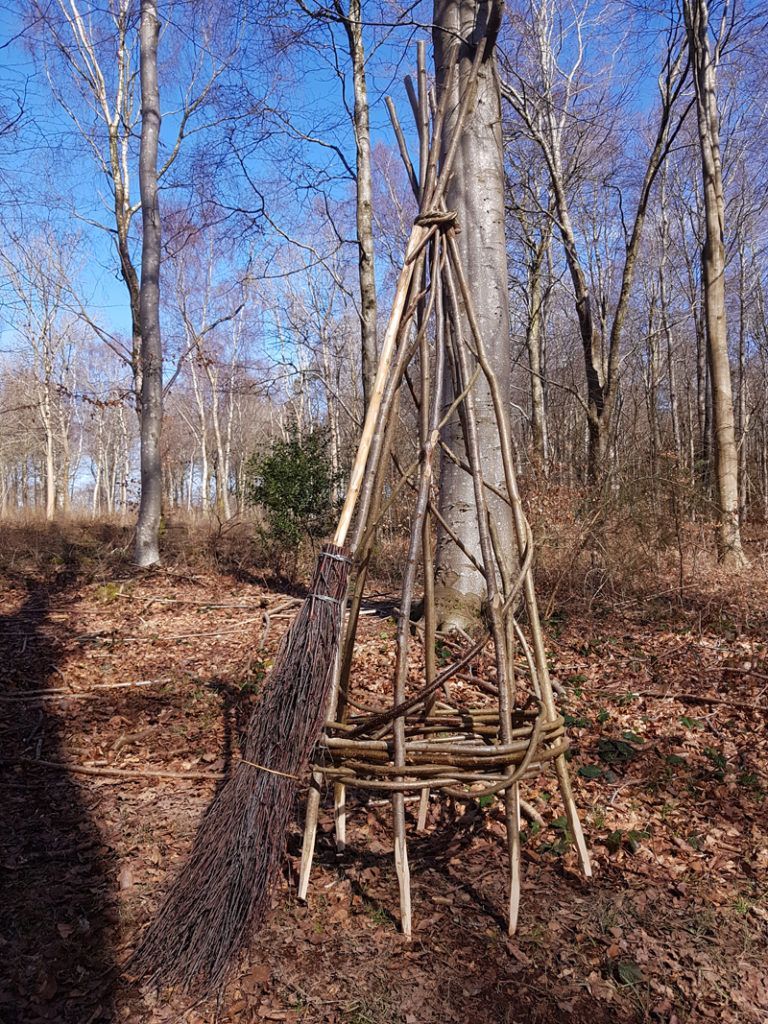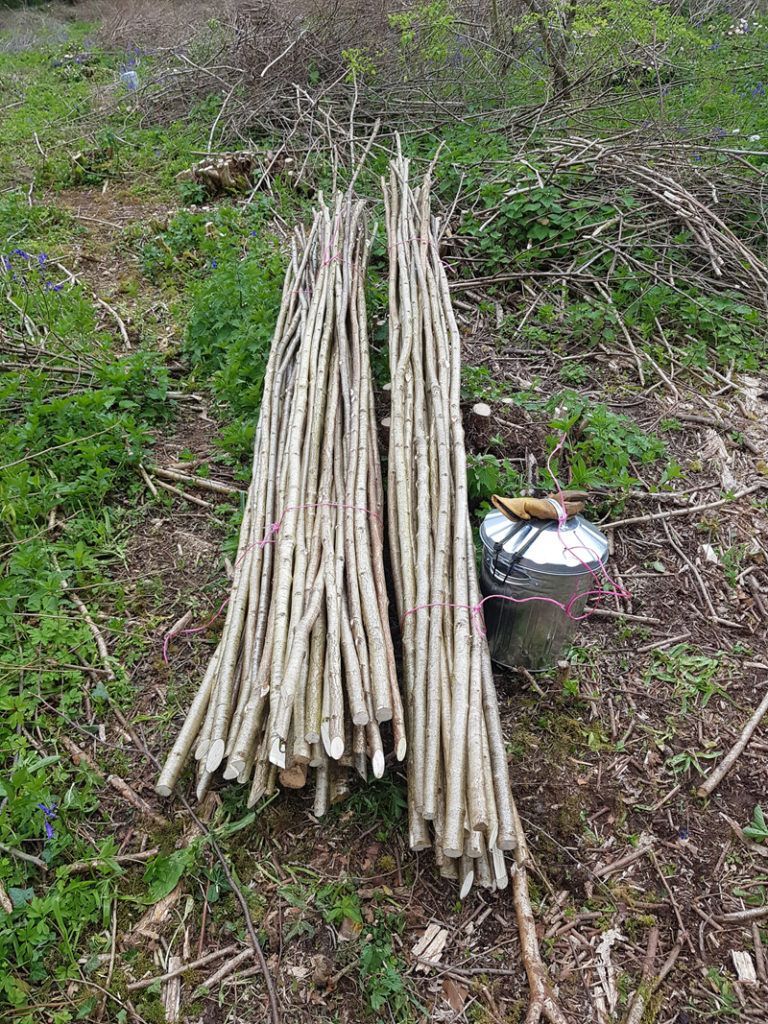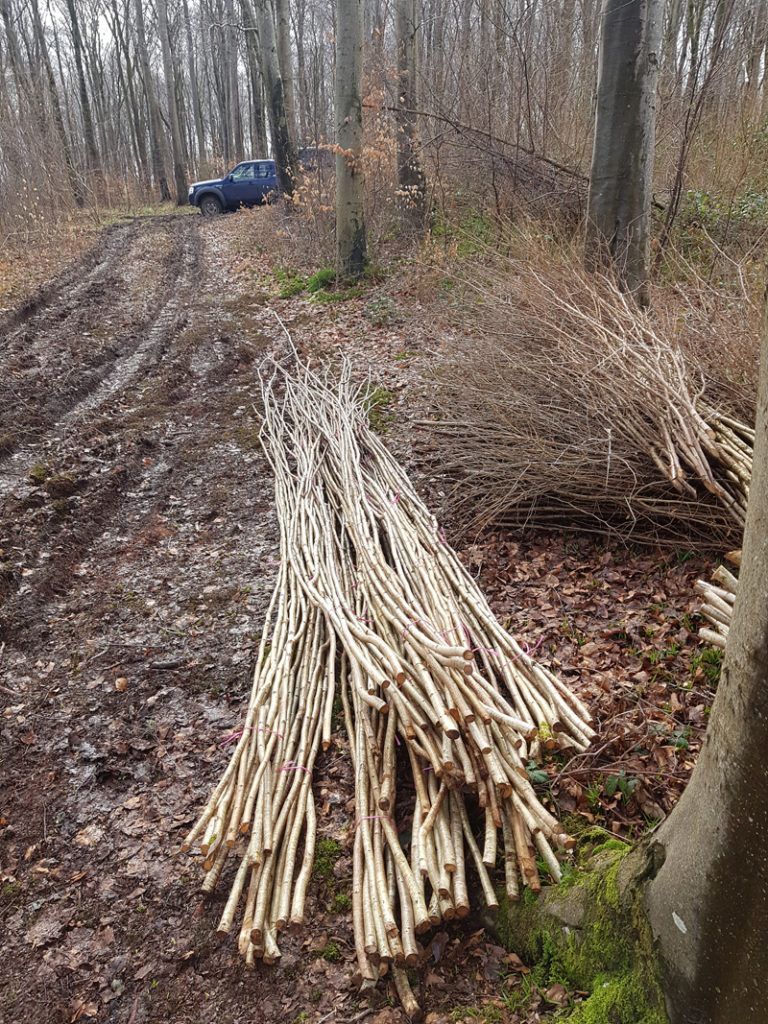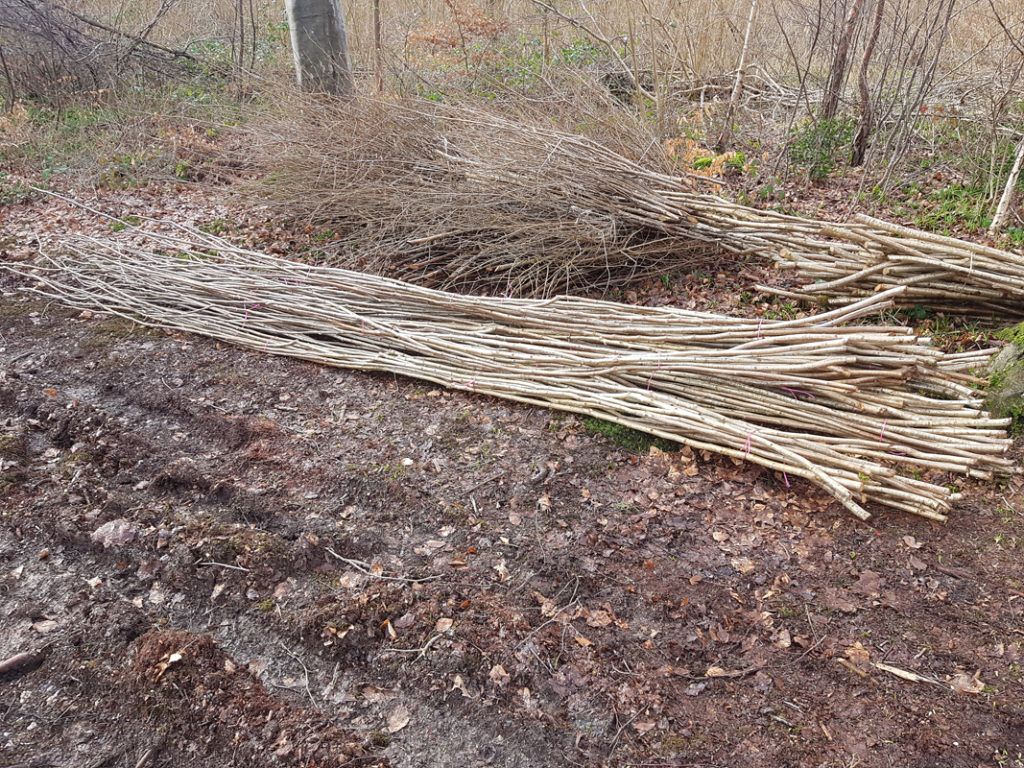Pete Etheridge writes about the importance of coppicing for woodland conservation and biodiversity.
A decline in coppicing
Coppicing has been practised in the UK for hundreds (if not thousands) of years. In 1905 (decades after the peak in coppicing activity), it was estimated that there was somewhere in the region of 230,000 ha of actively managed coppiced woodland within the UK (Anon., 1952). By 2003, this had fallen by nearly 95% (although this too may be under recorded) to an estimated 12,767 ha (Harmer and Howe, 2003).
Whilst it is recognised that correlation does not equal causation, it is fairly safe to assume that this huge decline in the area of worked coppice has had a knock-on impact on the many wildlife species which had come to rely heavily on this form of woodland management.
The following list is taken from ‘Biodiversity implications of coppice decline, transformations to high forest and coppice restoration in British woodland’ (Kirby, K J. et al., 2017):
- Of six butterfly species associated with clearings in woodlands, three have shown marked national declines: a 77% decline since 1970–82 in the case of the High Brown Fritillary (Argynnis adippe) (Asher et al. 2001);
- Kirby et al. (2005) found a reduction in ground flora species richness in woods surveyed in 1971 and 2001 associated with increasing basal area of trees and shrubs (basal area often being closely associated with canopy cover);
- The decline of coppice woodland management is probably a significant factor in the present scarcity of dormice (Muscardinus avellanarius) (Bright and Morris 1990);
- Changes in woodland structure were thought to be the most likely driver for many of the bird declines observed in a resurvey in 2003/4 of woods first visited in the 1980s or earlier. These structural changes may have been driven by changes in woodland age, reduction in management and deer browsing (Amar et al. 2006). Fuller (1992) reported on the high densities of migrant song-birds that could be sustained in worked coppice.
Commercial coppicing and conservation go hand-in-hand
As an industry we recognise that coppicing, whilst beneficial to some species and species groups, can be detrimental to others (ie. some invertebrates such as stag beetles, lower plants, etc). Given, however, that coppiced woodland comprises only 0.5% of the current woodland cover in the UK (Forestry Commission, 2003), it is clear that (where appropriate) an expansion in both the area and distribution of actively managed coppice could have huge benefits to the conservation and restoration of our woodland biodiversity. As stated in ‘Coppice Woodlands: Their Management for Wildlife’ (JNCC, 1993): “From a conservation viewpoint, active coppice and high forest complement one another and our woodlands would be all the poorer if one were to dominate.”
The impacts of the decline in commercial coppicing on woodland biodiversity was recognised by conservation bodies in the second half of the 20th century and, with the help of volunteers and generous grant funding, ‘conservation coppicing’ was introduced on many woodland nature reserves. In most instances, this marked a subtle but important change; the economic aspect of coppicing was removed. No longer were coppice products needed to sustain a livelihood, indeed the rods and brash became the incidental by-products of coppicing, in polar opposite to years past, when biodiversity was the incidental by-product of commercial coppicing.
Whilst this resurgence in coppicing was certainly a good thing for biodiversity, it did bring about its own problems. Coppicing as a management technique is labour intensive and requires a long-term commitment (the shortest coppice rotation excluding short rotation willow is usually no less than 6 years). Without external funding, it therefore becomes a costly activity for cashed strapped conservation bodies to finance. The introduction of ‘conservation coppicing’ also resulted in new policies being implemented, notably a reluctance to reduce the density of standard trees within the coppice, the retention of brash (either as deadwood habitat, browsing protection or simply due to it being an unused/unwanted by-product of management) and, in some cases, a reluctance to control deer numbers.
These policies, whilst undeniably well intentioned, unfortunately result in compromises; too many standards reduce understorey regrowth, leaving brash in-situ negatively affects floral diversity (Plantlife, 2011) and excessive deer numbers/browsing pressure prevents coppice regrowth. Without the financial incentive provided by commercial coppicing, it is often the case that coupes are not maintained and stool density reduces over time. Somewhere along the line, there arose the misunderstanding that ‘conservation coppicing’ and ‘commercial coppicing’ are somehow separate and incompatible; an assertion that could not be further from the truth.
For hundreds of years wildlife and commercial coppicing have thrived side-by-side; the coppice providing foraging and shelter for birds and animals and, in turn, their presence enriching the day-to-day life of the coppice worker (indeed for many, this is the principal reason that they pursue coppicing as a line of work). Far from being damaging to wildlife, the activities of commercial coppice workers ensures healthy and vigorous regrowth – after all, their very livelihoods depend on it. As coppice workers however, we need to understand how our changing practices can affect the biodiversity around us. Coppice coupes need to be a certain size to ensure that sufficient light reaches the stools to ensure good regrowth, but excessively large coupes (possibly encouraged through the use of machinery) can have a detrimental impact on many species.
In today’s world of economic and political uncertainty, funding for conservation land management is increasingly scarce. Establishing the presence of commercial coppice workers within our woodland nature reserves not only brings benefits to biodiversity and the rural economy, but can lessen the financial burden on the conservation bodies themselves. Managed correctly, and with long-term commitment on both sides, it can even generate a source of future income.
Written by Pete Etheridge
Find out more about woodland management:
References
Amar A, Hewson CM, Thewlis RM, Smith KW, Fuller RJ, Lindsell JA, Conway G, Butler S, MacDonald MA (2006). Long-term changes in the populations of woodland birds. RSPB / BTO Research Report, Thetford and Sandy, UK
Anon (1952) Census of Woodlands 1947-1949. HMSO, London
Asher J, Warren M, Fox R, Harding P, Jeffcoate G, Jeffcoate S (2001) The millennium atlas of butterflies in Britain and Ireland. Oxford University Press, Oxford
Bright PW, Morris P, Mitchell-Jones T (2006) The dormouse conservation handbook. English Nature, Peterborough, UK
Fuller RJ (1992) Effects of coppice management on woodland breeding birds. In Buckley GP (ed) Ecology and management of coppice woodlands, Chapman and Hall, London, pp 169–192
Fuller RJ & Warren M (1993) Coppiced Woodlands: Their Management for Wildlife (2nd Edition). Joint Nature Conservation Committee
Harmer R and Howe J (2003) The Silviculture and Management of Coppice Woodlands. Forestry Commission, Great Britain
Kirby KJ, Smart SM, Black HIJ, Bunce RGH, Corney PM, Smithers RJ (2005) Long term ecological change in British woodland (1971-2001). Peterborough, English Nature (Research Report 653)
Kirby KJ, Buckley GP & Mills J. (2017). Biodiversity implications of coppice decline, transformations to high forest and coppice restoration in British woodland. Folia Geobotanica 52, 5-13. Plantlife (2011) Forestry Recommissioned: Bringing England’s Woodlands Back to Life. Plantlife, Salisbury.
*Updated on 30.11.2020 following generous comments & feedback from PTES*




